Entry 2 Day 11 23 October 2024 24°31'48''N, 23°52'48''W Travelled: 2347.13 Nautical miles
24°31'48''N, 23°52'48''W Travelled: 2347.13 Nautical miles
How are your sea legs?
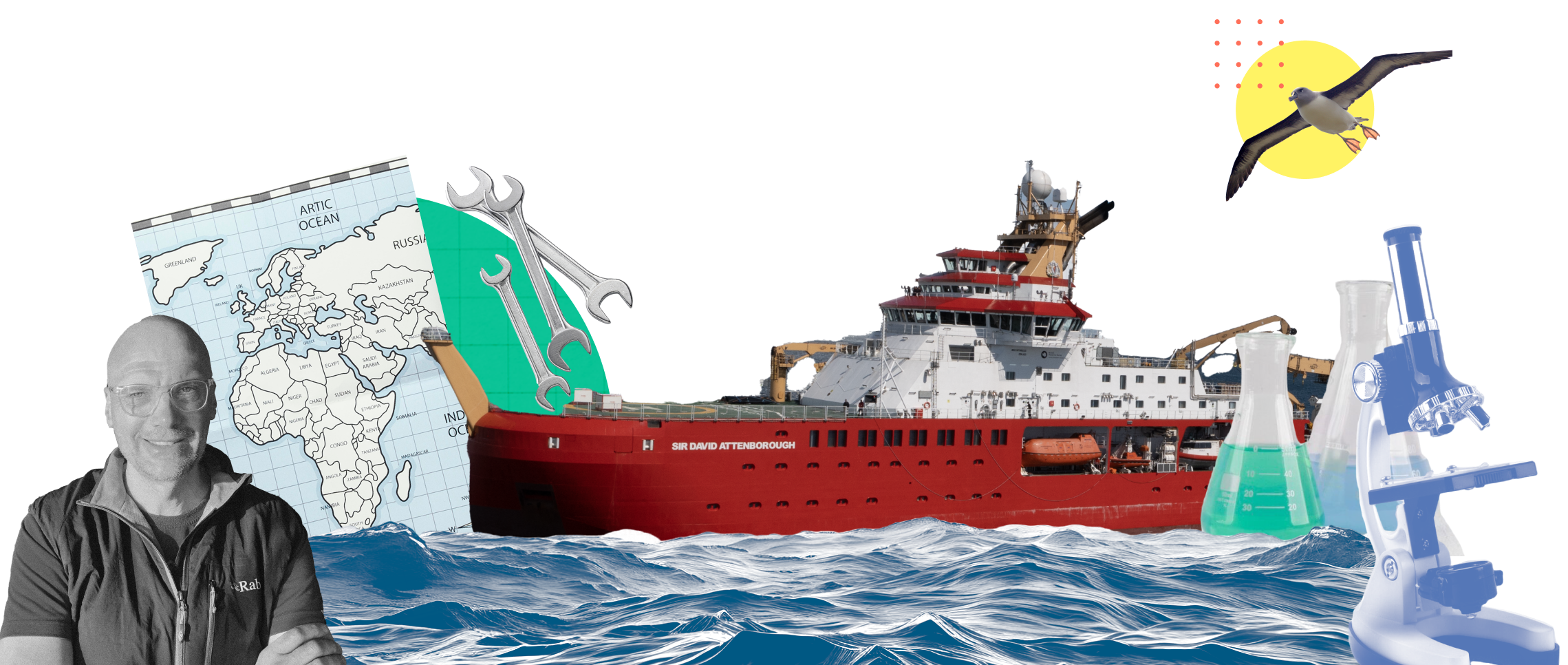
Our journey is well and truly underway. We’ve been at sea for 11 days and we’re now sailing around Africa.
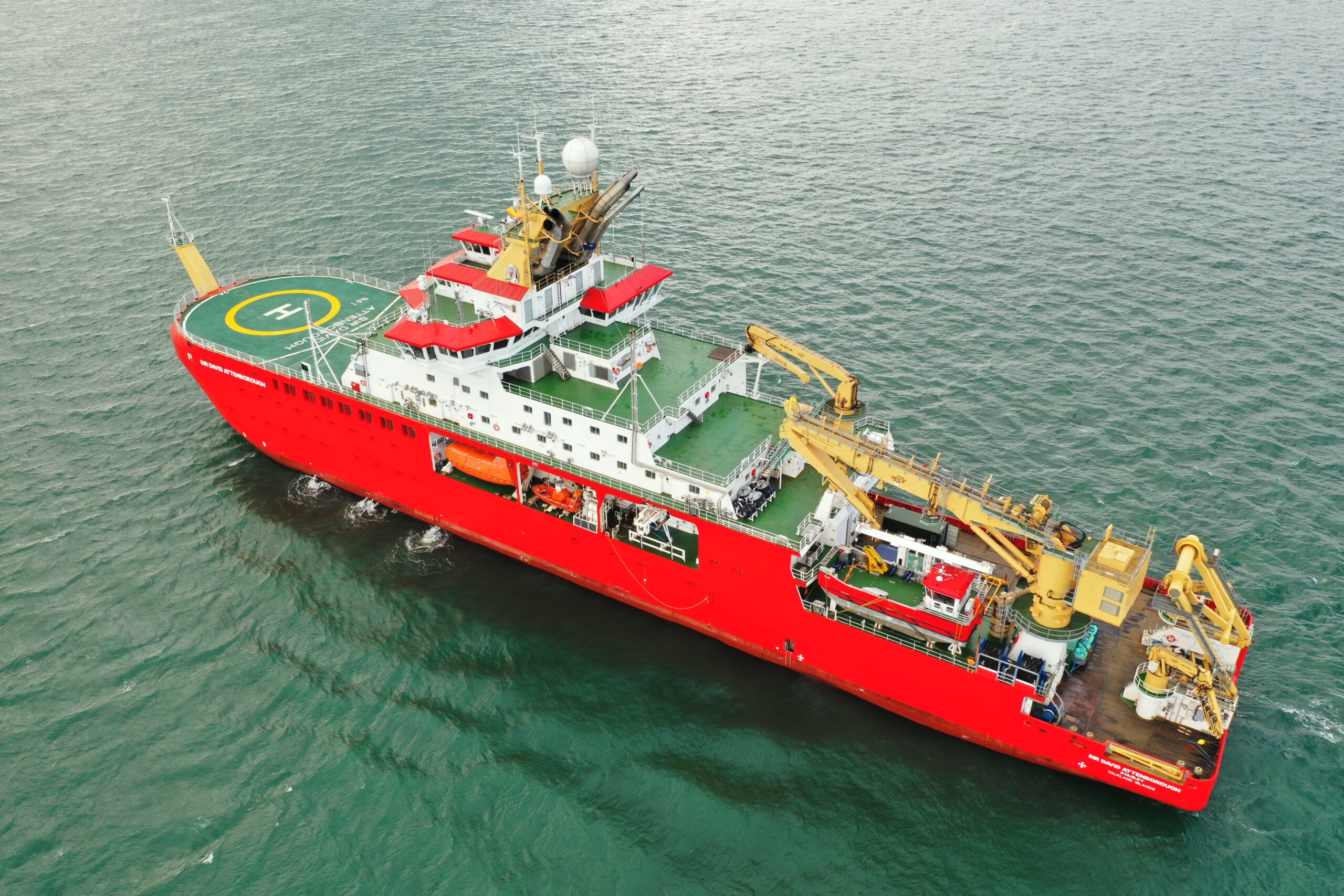
The ship is making its way towards the equator
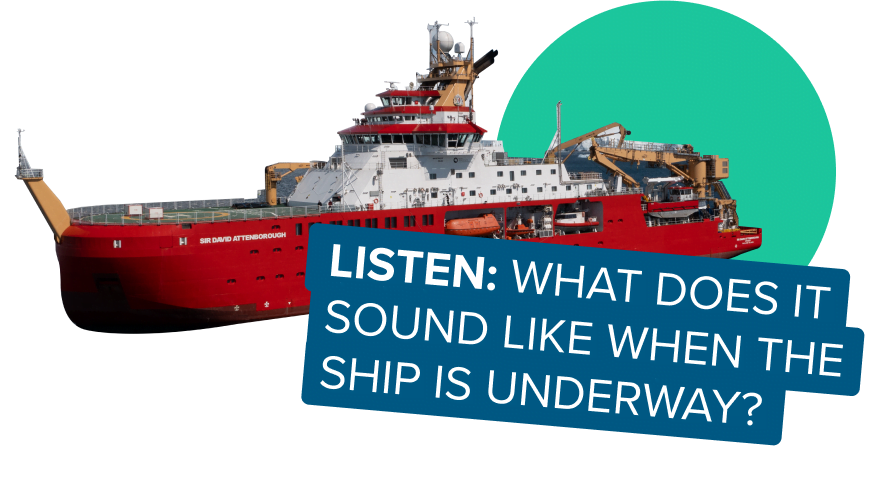
Speedy sailing
The ship sails at around 13 knots – about 24km/h. It might not sound very fast considering we’re travelling around 8,000 nautical miles, but we’ll be at Rothera Research Station in Antarctica in just four weeks.
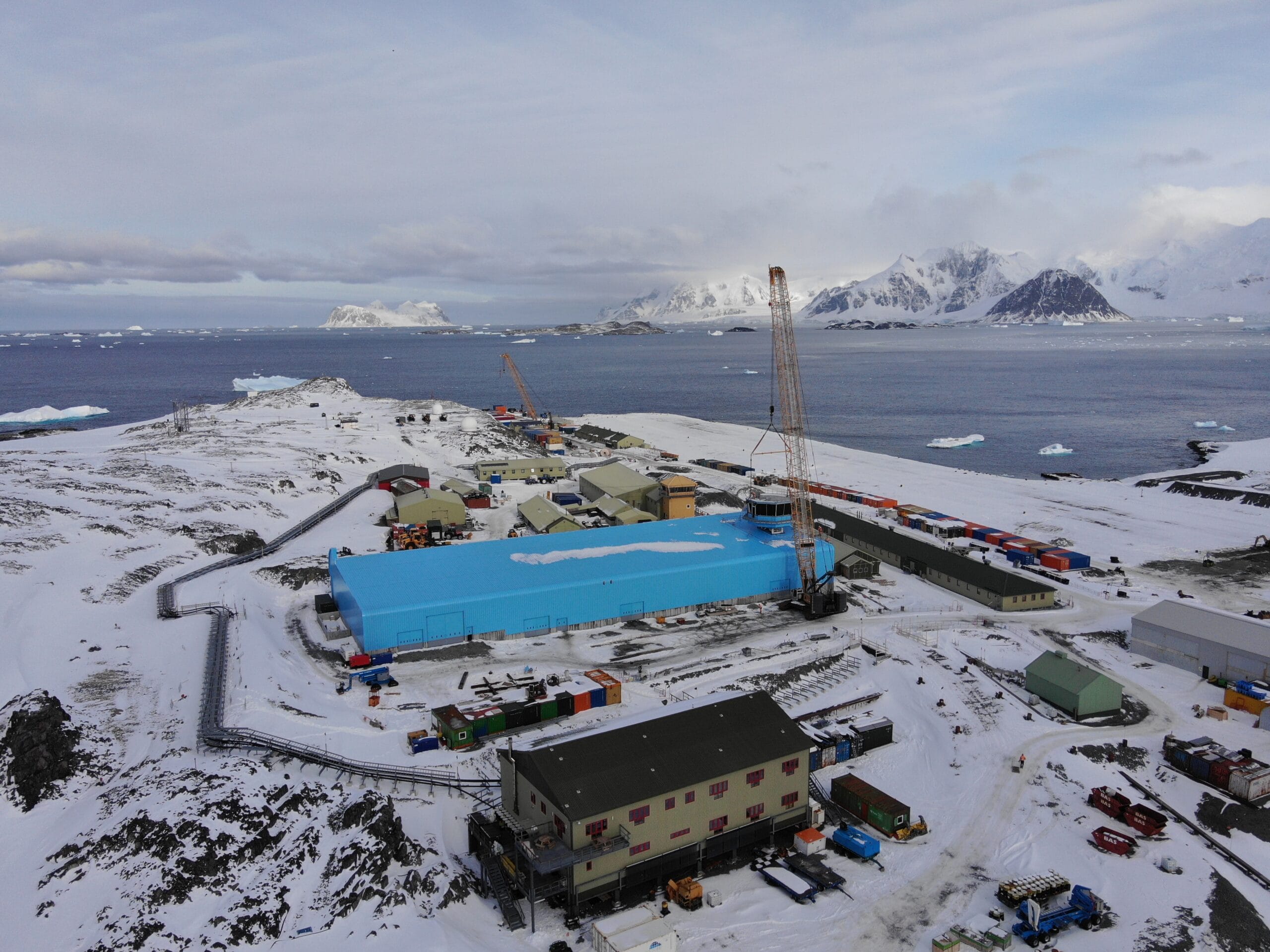 Jake Martin
Jake Martin Hopefully you’re learning your way around the ship now – and getting used to all those stairs!
There are 13 decks on the ship – starting at the bottom of the Engine Room, with the Crow’s Nest (or Conning Tower) at the top. This is the highest point on the ship, with controls to drive the ship through ice – being up so high maximises your view when navigating through more challenging conditions.
That’s a lot of stairs from top to bottom – so we hope you’re feeling fit!
Let’s visit the engine room
We’re going to start our tour of the ship down in the Engine Room. It’s a hot and noisy space full of lots of machinery. It’s also where a lot of our engineering team spend most of their time. On the RRS Sir David Attenborough, we have a Chief Engineer, 2nd and 3rd Engineers as well as engineers specialising in electronics. They all work together to maintain and fix the engines and machinery, keeping everything in tip-top condition.
Let’s take a look around…
Let’s look around the Engine Room…
The ship has been specially designed for its unique job. It has powerful engines to navigate through ice, but they are quiet, with low-vibration, so that super-sensitive acoustic instruments that measure animals like krill – a small, shrimp-like crustacean – can be used while the ship is moving. They also have to meet strict environmental regulations.
You can explore the Engine Room with this 3D tour.
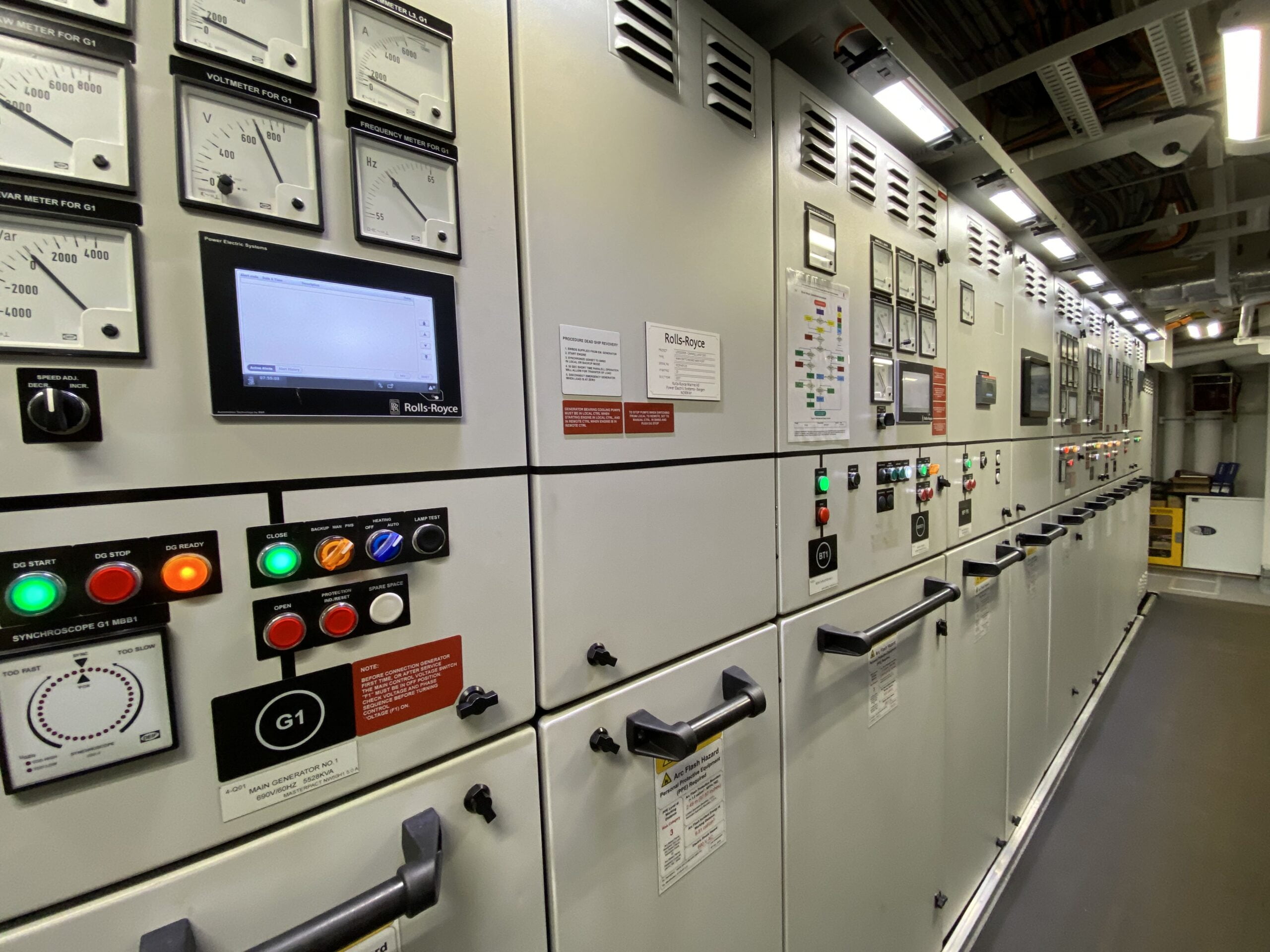

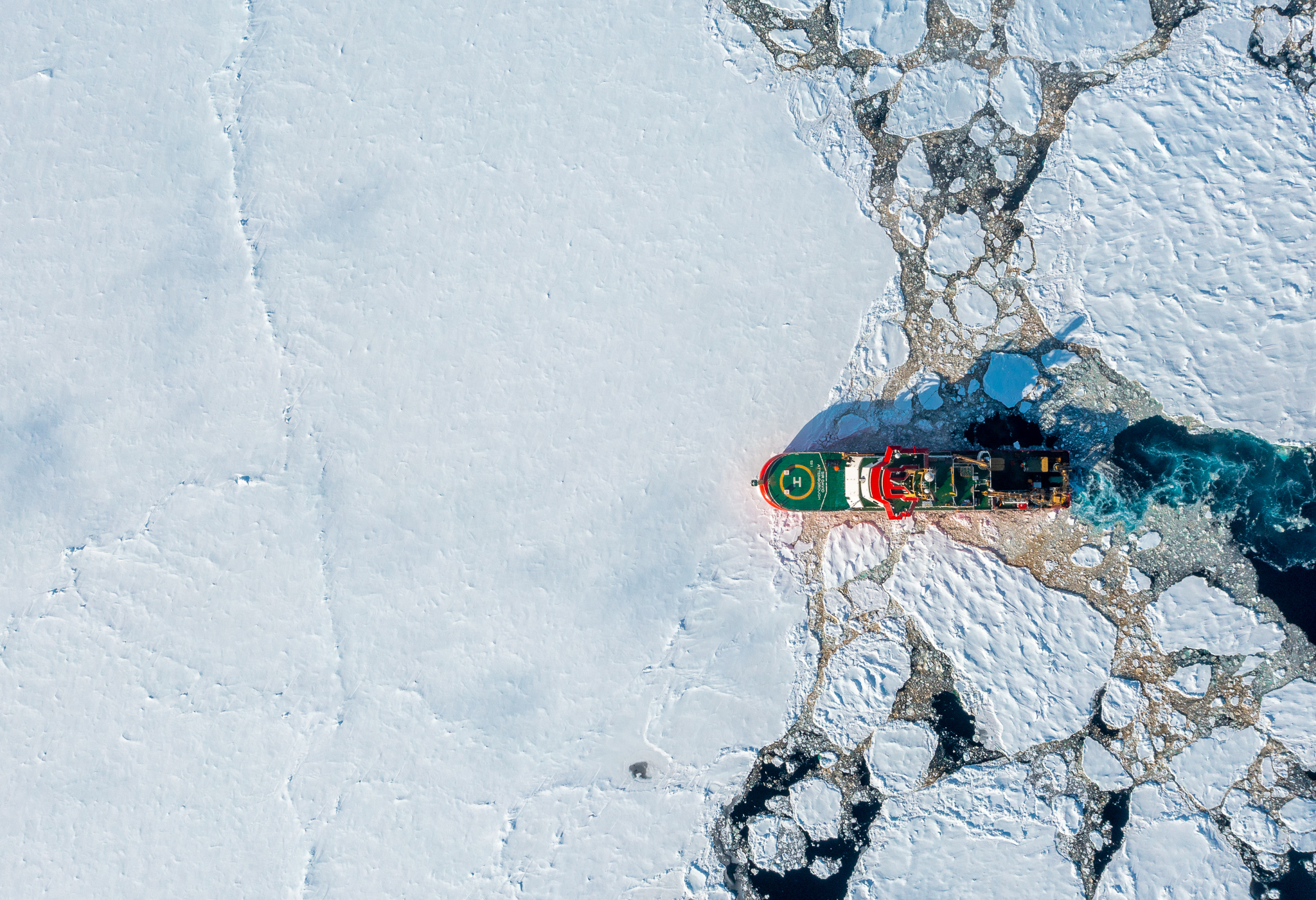
Want to know more about some of the cool engineering features of the ship? Check out our Design and Engineering page.
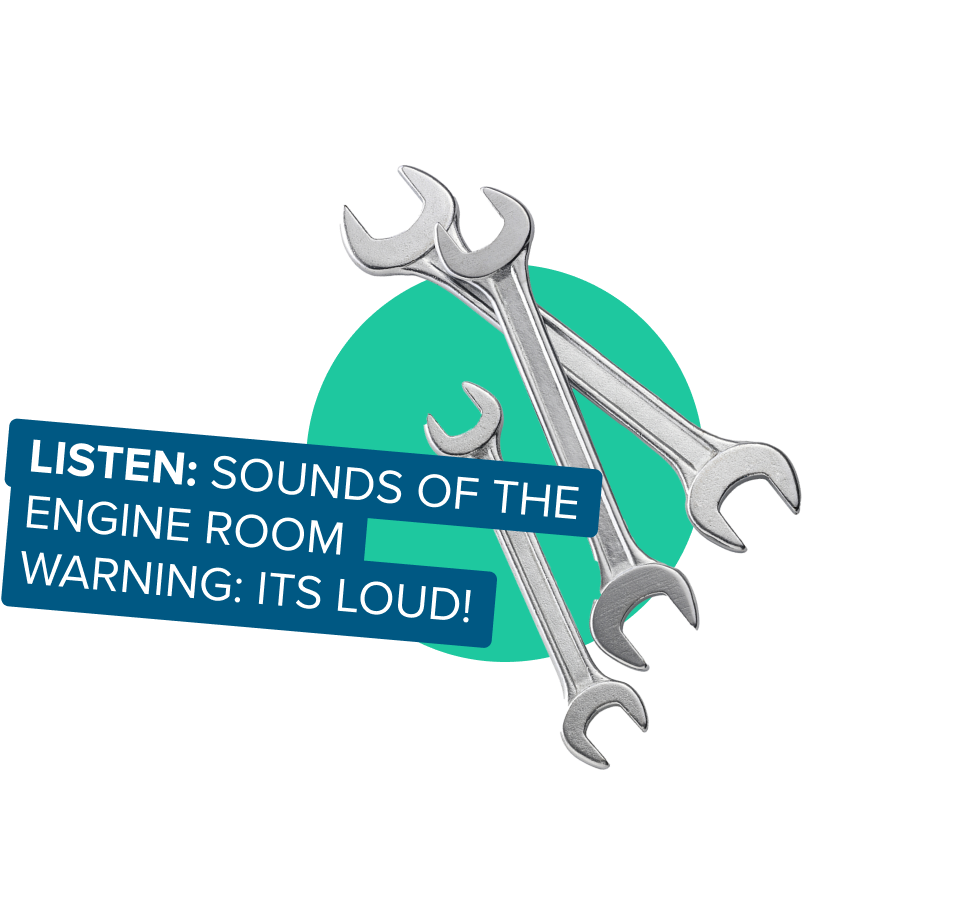
Meet the engineers
Peter Enderlein and Carson McAfee are engineers. They join researchers on science missions to help them use all the science kit.
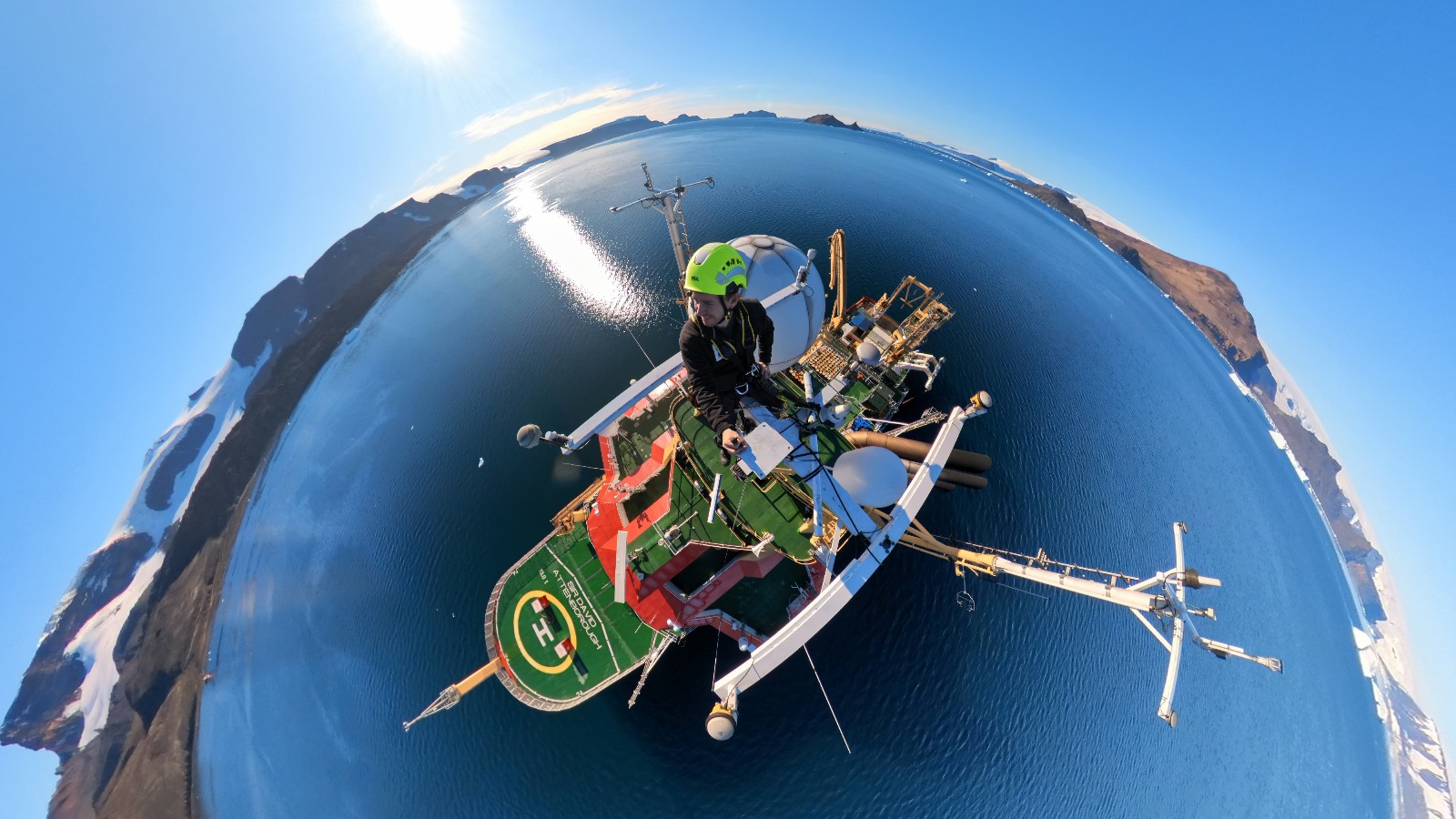
What’s your job on board?
Peter: I’m the Head of Mechanical Services which means I’m responsible for a team that designs mechanical systems for our scientists. These could be used in the air, on land or in the sea – from the ocean surface all the way down to 6000m deep.
Carson: I’m a Scientific Electronics Engineer. I design, build and use scientific instruments on the ship (as well as our stations and field sites).
What sort of things do you make for the researchers?
Peter: Any mechanical system they need! It could be an underwater camera system, or special bits of kit (called coring systems) that collect mud from the depths of the ocean. We build so many things its hard to describe them all!
Carson: I work directly with the scientists and researchers to help solve their research problems. This can involve designing bespoke bits of kit, or adding bits to existing systems to collect different kinds of data.
What is a typical day at sea like for you?
Carson: There are two parts to every day. The first is checking the instruments and data look good, and putting instruments into the ocean and collecting new data.
The second is dealing with unexpected problems – fixing things, adjusting bits of kit and adapting to changing plans.
Peter: When I’m at sea I’ll work a 12-hour shift, usually at night, when we collect samples with our various net systems. I’m responsible for using these safely, working closely with the crew. We use these nets to catch anything from krill to fish. The other 12 hours are for sleeping, doing your laundry and relaxing!
What’s the best thing about your job?
Peter: No day is like the other! We’re always switching between different bits of kit so it never gets boring, and I love the changing scenery and all the places I have been to while working on the ship.
Carson: The constantly changing scenery! It’s the best office view in the world. One minute you are on deck with whales and dolphins jumping out of the water, the next there are emperor penguins sliding along the ice.
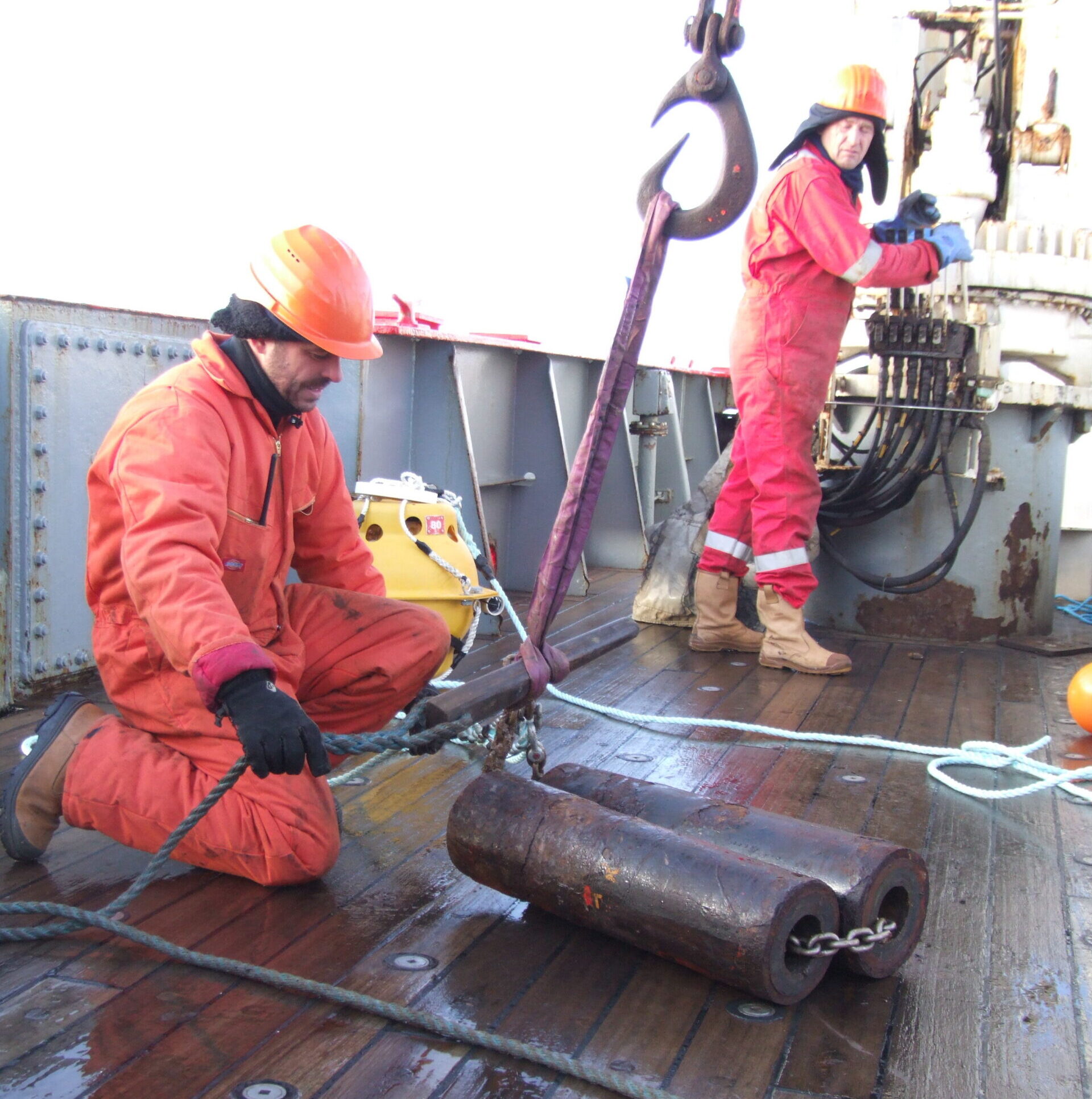
Peter hard at work on deck
What challenges do you face working at sea?
Peter: You can’t get anything you haven’t packed! There are no shops, no deliveries so you have to bring everything you need with you. It means we’re very good at improvising if things break and we need to fix them.
The other challenge is the weather – it’s unpredictable and the sea can get so rough you can’t do any work. But I like it – you can’t control the weather and you have to adapt to the constantly changing conditions.
Carson: Limited resources. At sea, when there’s a problem you have limited time, skills, tools and parts available to fix it. It can also be difficult being away from home for so long, working long hours every day of the week. But – it’s fun balancing these elements and finding ways to solve problems.
And finally, what’s the best thing about Antarctica?
Carson: Antarctica plays a critical role in how our planet is changing, and it’s a unique privilege to travel there and to contribute to the research that BAS does in the region. It is – and always will be – a special place!
Peter: For me, it’s the remoteness and its stunning landscape. Together with the wonderful wildlife it is a very special place to go. It’s definitely one of the most interesting places in the world to go, and working and spending long periods there is a huge privilege.
Want to know more about being an engineer in Antarctica? Listen to this episode of our Iceworld podcast and meet Jonathan Witherstone and Jaskiran Nagi – some of the world’s most remote electronics engineers.
Listen to the episode
Science at sea
We’re only a week into our journey but some cool science has already been happening on board! Even though this ship is designed for polar waters, we often collect data along the way – filling gaps in places that haven’t been surveyed before.
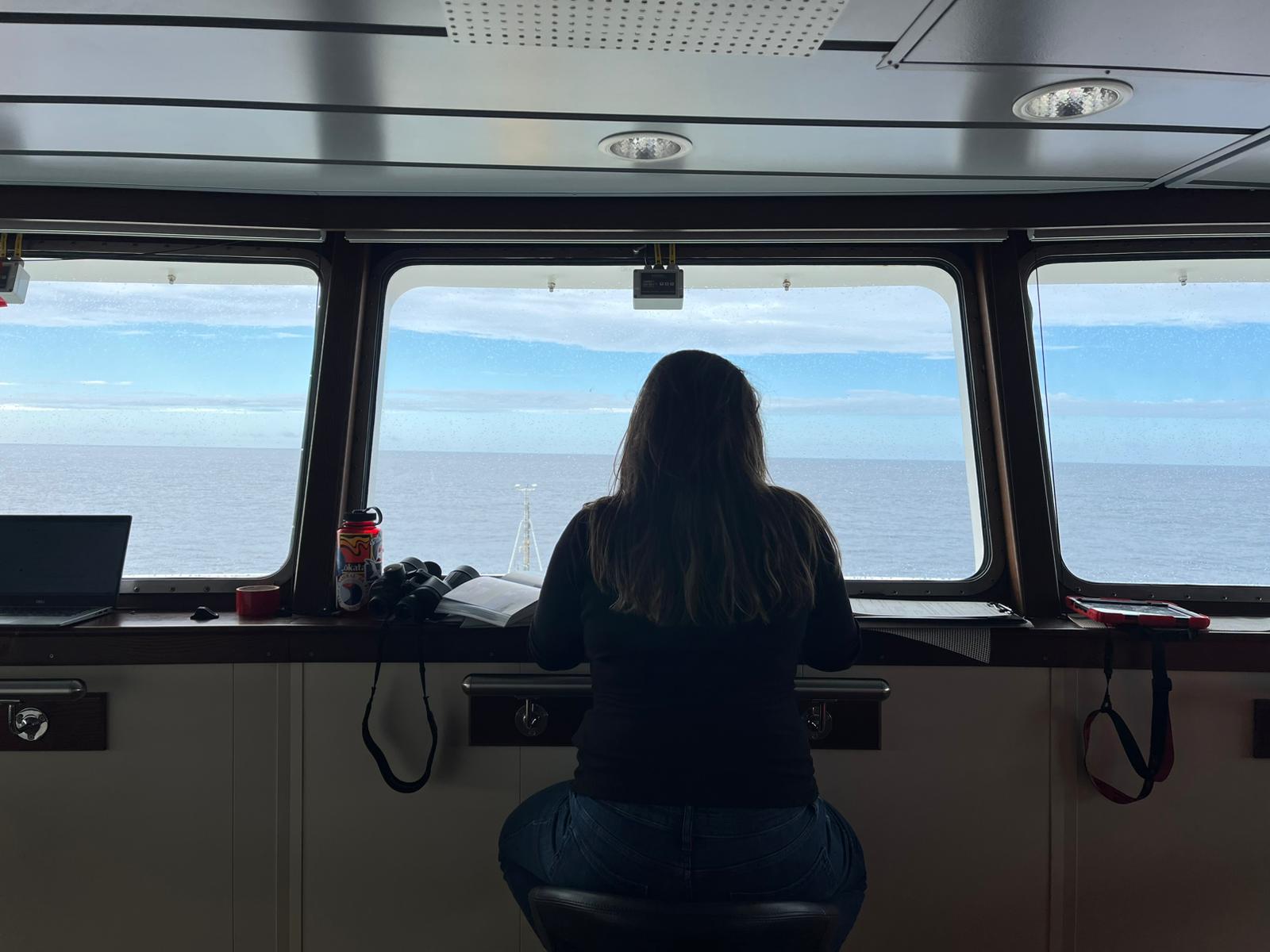

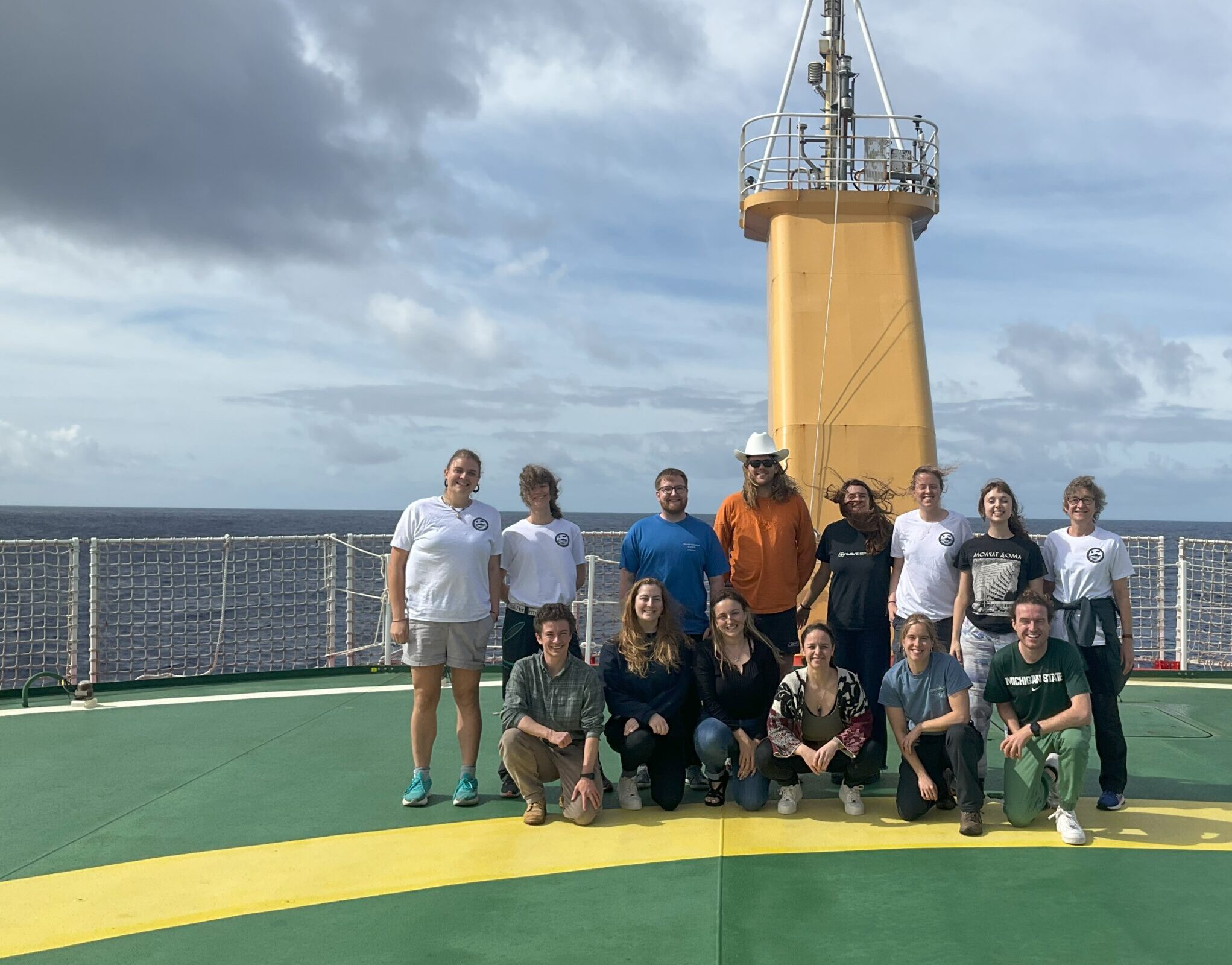
So, what are they up to?
We’ve been upgrading and testing our swath bathymetry system – a nifty bit of kit that helps us picture the sea floor! It works by sending a sound signal from something called a transducer, on the bottom of the ship. The sound travels through the water, reflects off the sea floor and returns to the transducer, where the time taken for the round trip is measured. The shorter the time taken for the sound to return to the ship, the shallower the water! The sound pulses are sent out at regular intervals as the ship sails through the water, painting a picture of the sea floor as it goes!
Understanding the shape of the sea floor helps us learn more about ocean circulation, tsunamis and underwater hazards. Even though the ocean covers around 70% of the Earth’s surface, we’ve only mapped about a quarter of it!
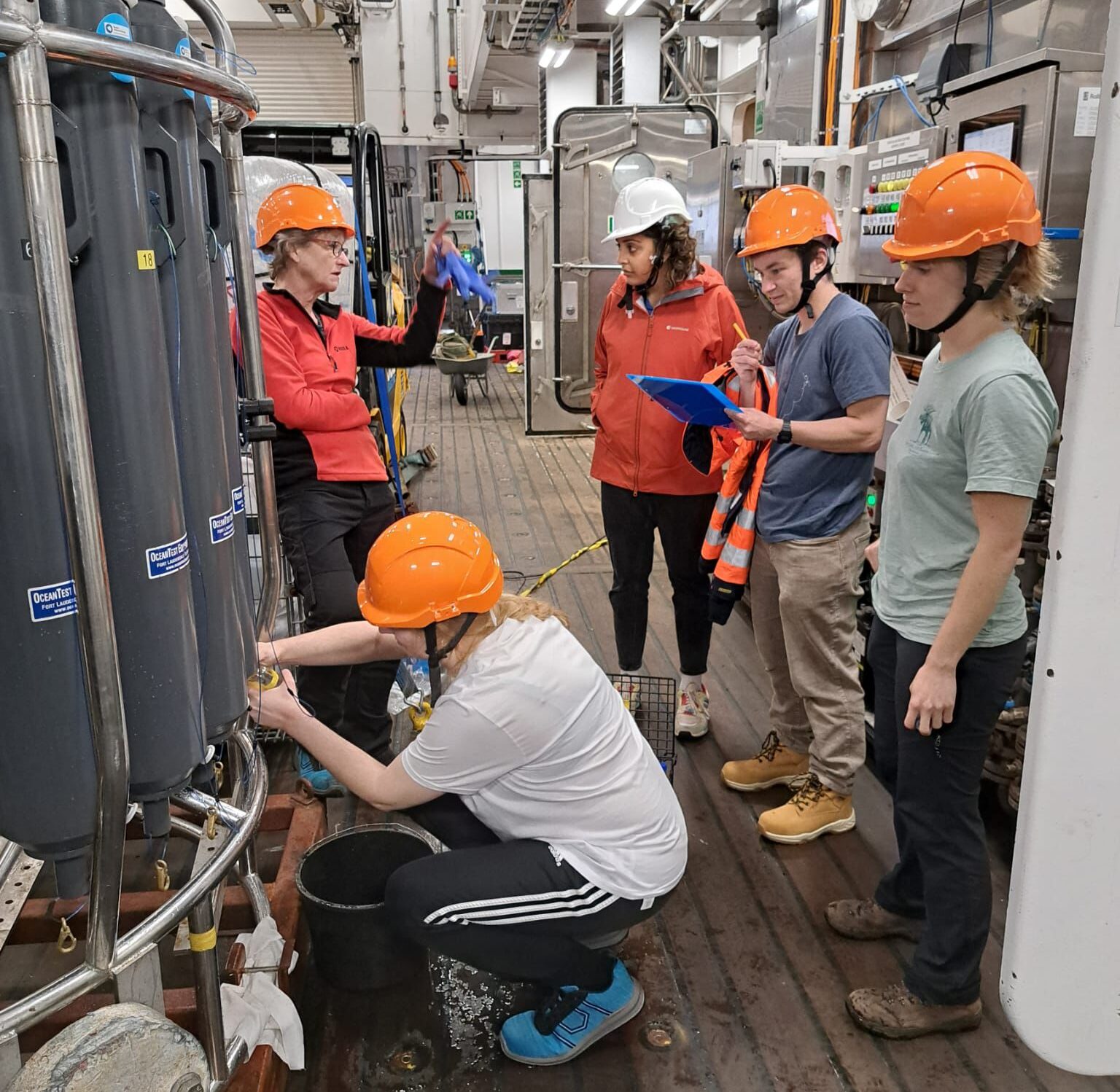
Young researchers learn about a bit of kit called a CTD (Conductivity, Temperature and Depth recorder)
The team trialled an Artificial Intelligence tool to see if it can help us count plankton. It’s hard to collect information about these tiny animals – but although they’re small they play a mighty role in the ocean so we need to know how many there are!
And if that wasn’t enough, ten young scientists were also on board, being trained up in how to do science at sea. This cool partnership called SKILLSET is between UK and Icelandic researchers, who spent the past ten days learning how to use some of the different instruments on board and getting to know some of our labs.

Did you know?
There is more than 750m2 of laboratory space on the ship – that’s almost as much as four tennis courts! There’s also space for 18 scientific containers so we can adapt the ship depending on what science we need to do!
And relax…
It’s not always all work and no play! There’s plenty of ways the crew can relax when they’re not at work – after all, the ship is their home as well as their workplace.
There’s a small library in the Conference Room, where people on board can swap books, and a selection of musical instruments. There’s also a foosball table (personalised with a picture of the ship) and – most importantly – a games console for racing battles!
During tea breaks (called smoko), people on board sometimes like to do the crossword together.
Many of the crew and scientists are keen photographers and wildlife enthusiasts – a lot of time at sea is spent looking for wildlife.
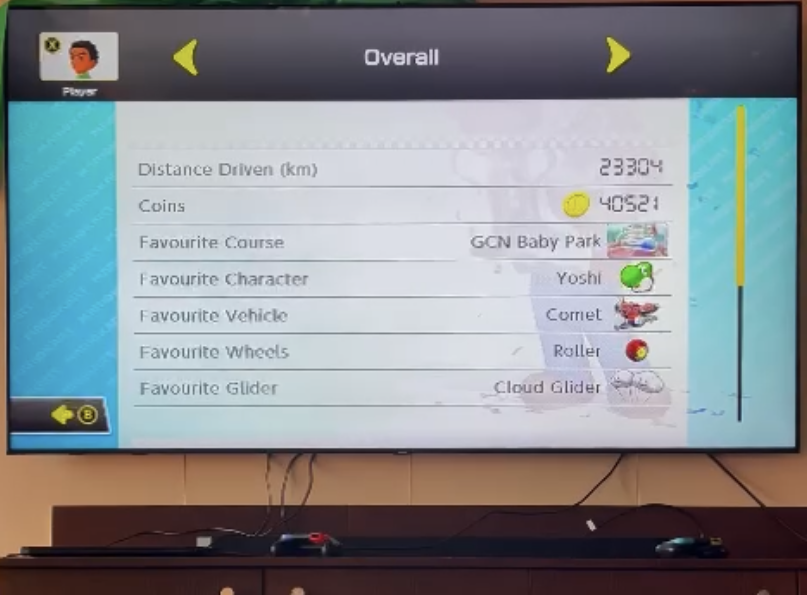

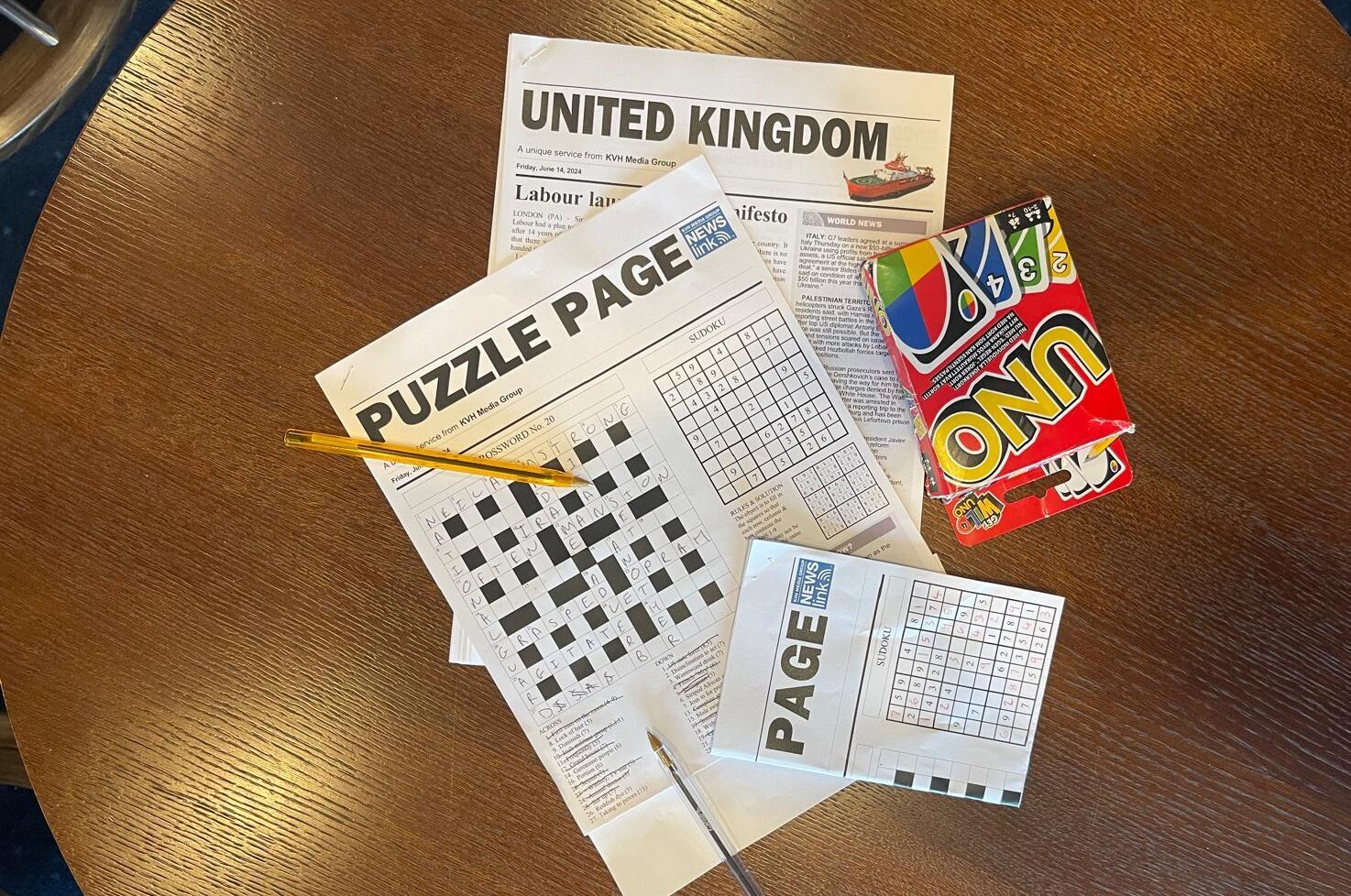
Life at sea
Find out more about living in this ‘floating city’ in this short animation.
Keeping fit at sea!
Keeping fit at sea is easy on the RRS Sir David Attenborough! There’s a gym on board, and people organise workout classes on the helideck.
A team member once ran a marathon by running laps of the helideck over a few weeks at sea!
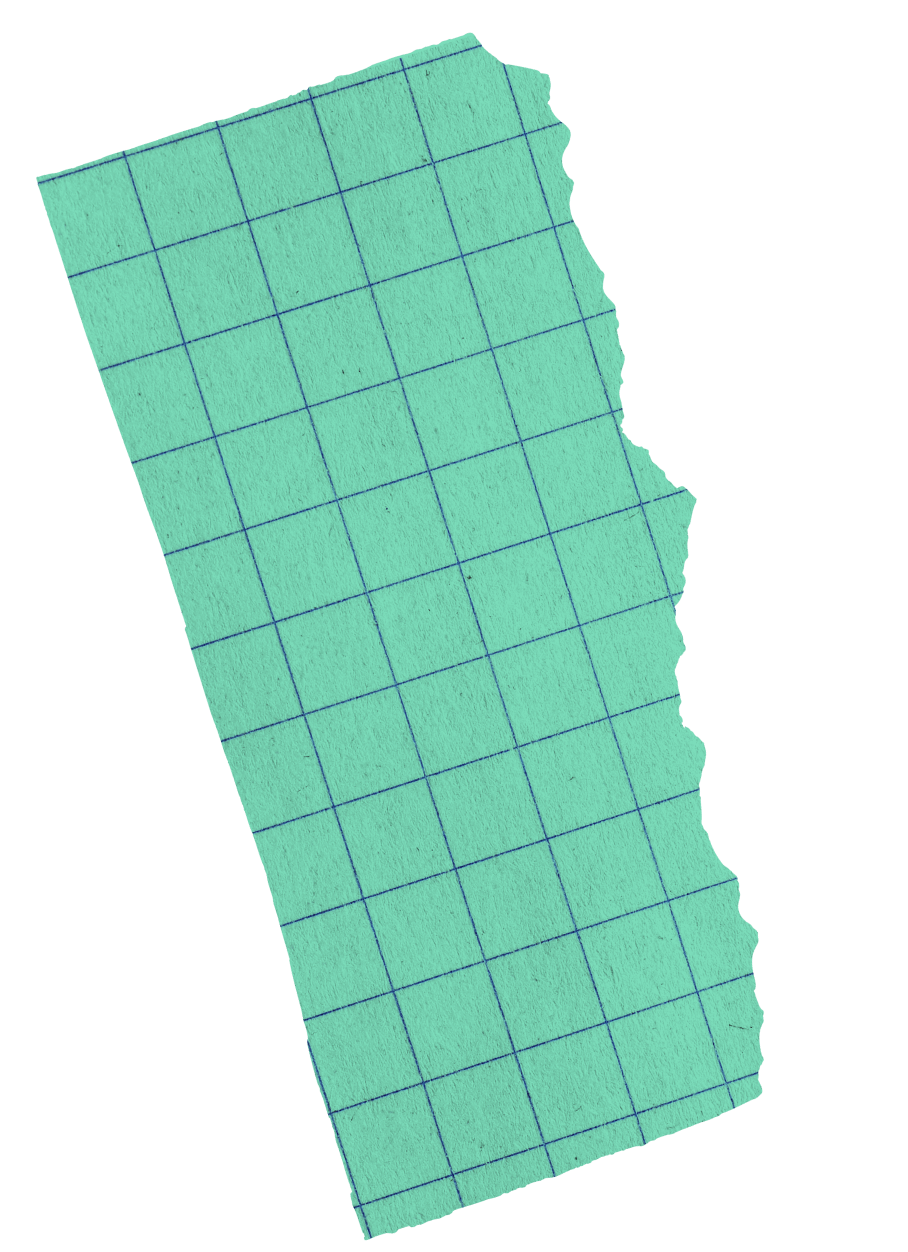
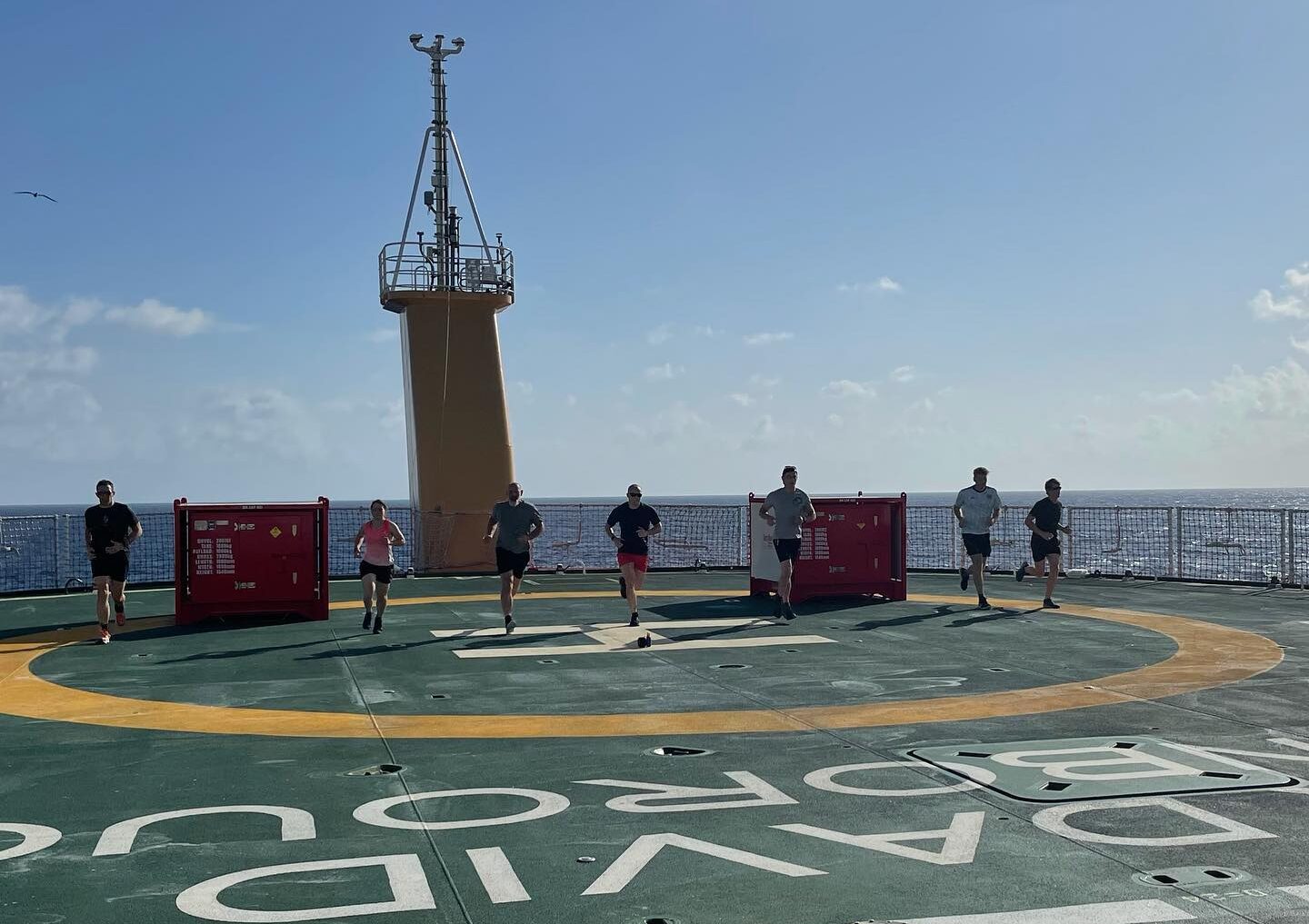 Jenna Plank, BAS
Jenna Plank, BAS What next?
Next week, we cross the equator and enjoy some balmy weather as we sail through the Tropics. And, we’ll be quizzing Captain Ralph with some of your fantastic questions!
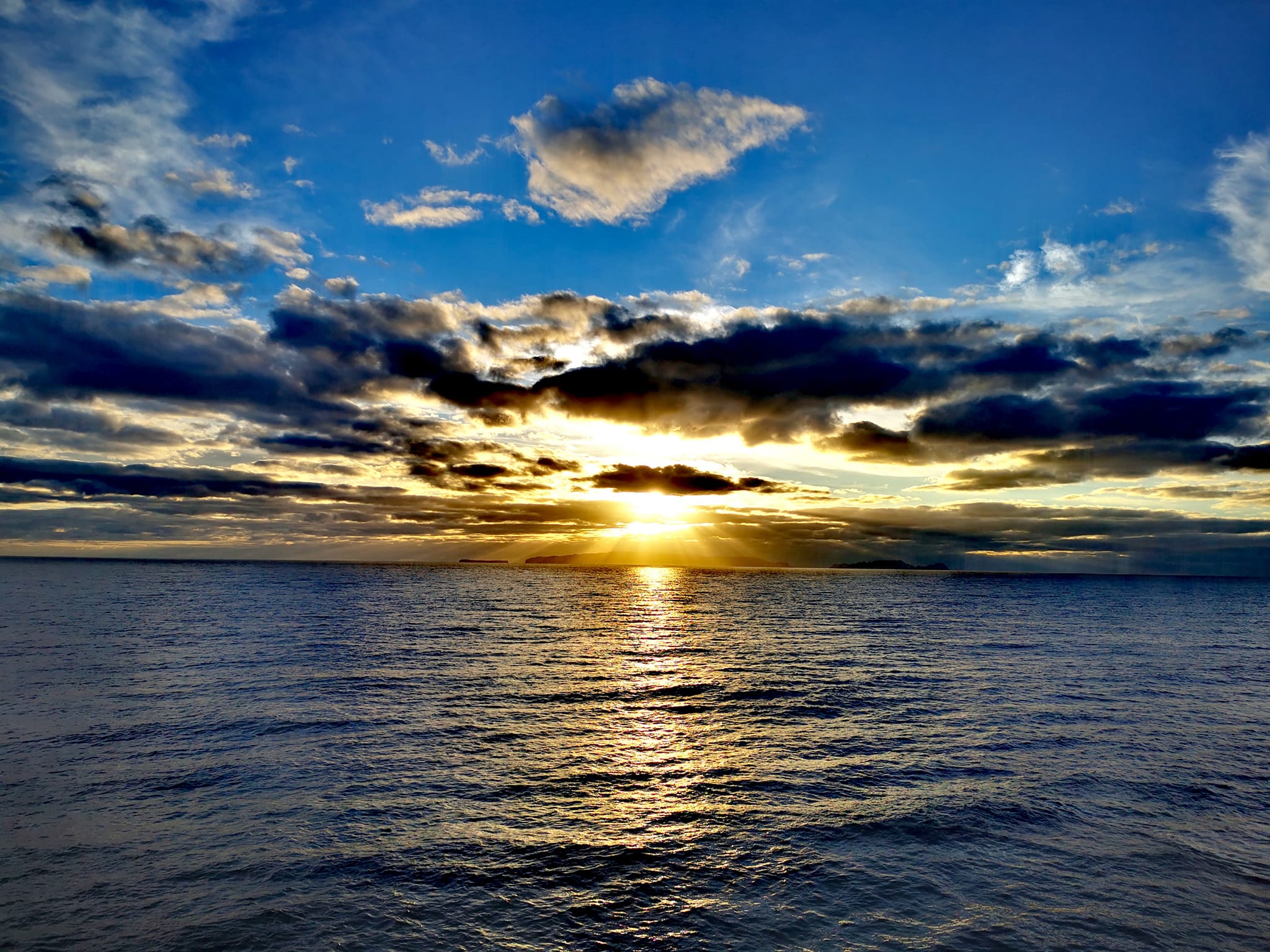 Rich Turner
Rich Turner 